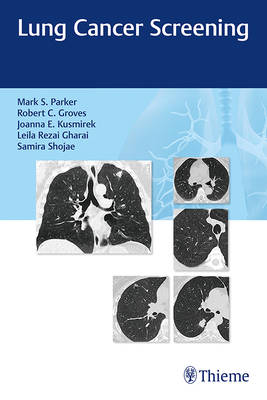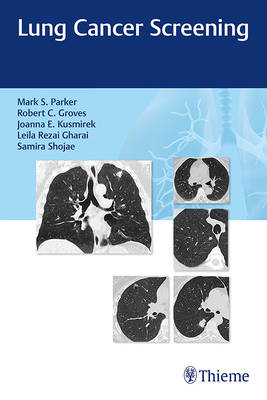
- Afhalen na 1 uur in een winkel met voorraad
- Gratis thuislevering in België vanaf € 30
- Ruim aanbod met 7 miljoen producten
- Afhalen na 1 uur in een winkel met voorraad
- Gratis thuislevering in België vanaf € 30
- Ruim aanbod met 7 miljoen producten
Lung Cancer Screening
Mark Parker, Robert Groves, Joanna Kusmirek, Leila Rezai Gharai, Samira ShojaeeOmschrijving
Lung cancer is the leading cause of cancer-related death among men and women in the U.S. and worldwide. For many decades, lung cancer was the sole cancer among the deadly four without an evidence-based screening method for decreasing mortality. This changed in November 2011, when findings from the National Lung Cancer Screening Trial showed low-dose lung CT screening was more efficacious in reducing deaths in high-risk individuals than conventional radiography. As such, an ever-increasing number of health organizations now recommend this screening protocol.
Lung Cancer Screening by Mark Parker and esteemed VCU Health colleagues, fulfills the dire need for a comprehensive guide explaining the crucial aspects of lung cancer screenings. The first two chapters lay a foundation with discussion of lung cancer epidemiology and risk factors beyond cigarette smoking. Subsequent chapters cover the fundamentals, with clinical pearls on setting up a successful lung cancer screening program, patient eligibility criteria, imaging variances of tumors in the lungs, screening pros and cons, and interpreting/reporting screening results.
- The evolution and future of lung cancer screenings
- Detection and management of unexpected incidental pulmonary and non-pulmonary findings
- Discussion of test cases utilizing the Lung-RADSTM risk-stratifying system for low-dose chest CT screenings
- Benefits and potential harms associated with mass lung cancer screening programs including false positive, false negative, and over-diagnosis rates
This state-of-the-art guide is essential reading for radiologists, oncologists, pulmonologists, and internists. It is a must-have bookshelf reference for hospital radiology and oncology departments, in particular for those setting up new lung cancer screening programs.
Specificaties
Betrokkenen
- Auteur(s):
- Uitgeverij:
Inhoud
- Aantal bladzijden:
- 120
- Taal:
- Engels
Eigenschappen
- Productcode (EAN):
- 9781626235137
- Verschijningsdatum:
- 20/11/2017
- Uitvoering:
- Paperback
- Formaat:
- Trade paperback (VS)
- Afmetingen:
- 155 mm x 231 mm
- Gewicht:
- 272 g

Alleen bij Standaard Boekhandel
Beoordelingen
We publiceren alleen reviews die voldoen aan de voorwaarden voor reviews. Bekijk onze voorwaarden voor reviews.











